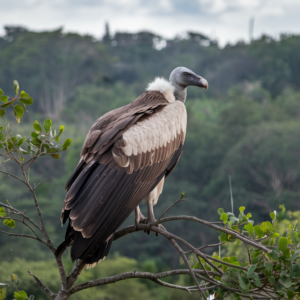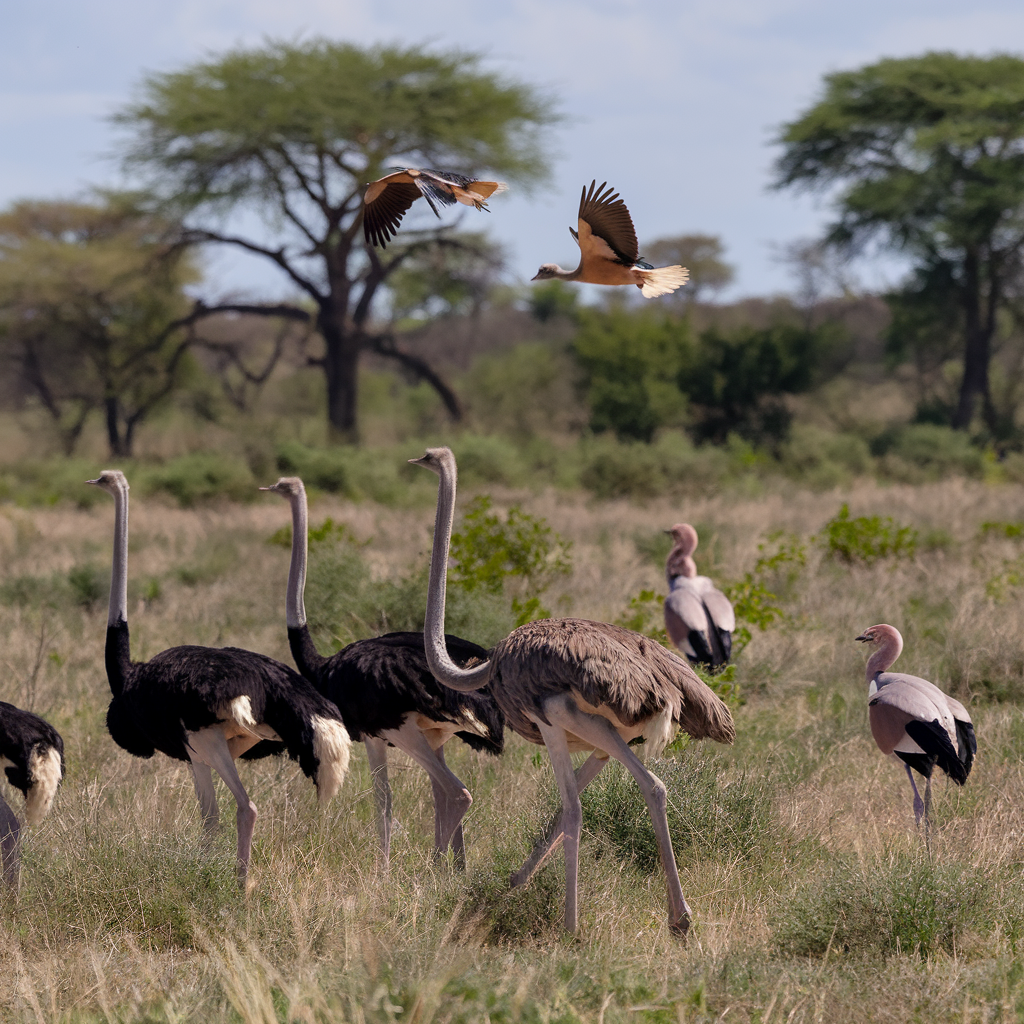The African savanna is one of the most fascinating ecosystems in the world. It spans several countries, including Kenya, Tanzania, South Africa, and parts of Central Africa, and is home to a breathtaking variety of wildlife. Among the standout creatures in the savanna are its diverse bird species. These birds contribute to the ecosystem’s health and captivate birdwatchers from around the globe with their beauty and unique behaviors.
In this article, we’ll explore the incredible bird species that inhabit the African savanna, their roles in the ecosystem, and why they are essential to maintaining the life balance in this region.
Overview of Savanna Birds
The African savanna is a vast grassland interspersed with trees and shrubs, creating a habitat for many species of birds. With over 2,500 species of birds documented, it is one of the wealthiest regions for bird diversity globally. Birds in the savanna fulfill various ecological roles, from pollinators and seed dispersers to predators and scavengers.
Bird Adaptations to the Savanna
The birds in this region have evolved specific adaptations to survive the extremes of heat, limited water supply, and a landscape dominated by large mammals. Some birds, like the ostrich, rely on their ability to travel long distances to find food, while others, like the lilac-breasted roller, use their vibrant colors to attract mates and deter predators.
Common Birds Found in the Savanna
The African savanna is home to a wide range of bird species, each with unique characteristics that help them thrive in this habitat. Below are some of the most common and recognizable birds of the savanna.
Lilac-breasted Roller
Scientific Name: Coracias caudatus
Habitat: Wooded savannas and grasslands
Diet: Insects and small vertebrates

The lilac-breasted roller is one of the most striking birds in the African savanna. Known for its dazzling array of colors, this bird often becomes the star of any birdwatching trip. It performs spectacular aerial displays, catching insects mid-air and showing off its bright plumage. With its lilac-colored chest, blue wings, and greenback, the lilac-breasted roller is a beautiful sight and a critical part of the savanna’s ecosystem, controlling insect populations.
Helmeted Guineafowl
Scientific Name: Numida meleagris
Habitat: Grasslands, savannas, and open woodlands
Diet: Seeds, insects, and small animals

The helmeted guineafowl is a ground-dwelling bird, easily recognizable by its speckled feathers and bald head. These birds often move in flocks and can be seen foraging for seeds and insects across the savanna. They are an essential part of the food chain, as prey for larger animals and predators of small insects and pests.
Secretary Bird
Scientific Name: Sagittarius serpentarius
Habitat: Grasslands and open savannas
Diet: Snakes, small mammals, insects

Standing over four feet tall, the secretary bird is one of the most distinctive species in the savanna. Known for its long legs and ground-hunting habits, it preys on small mammals, insects, and snakes. The secretary bird’s long legs allow it to walk miles, hunting down prey with precise and swift movements. It’s a true predator of the savanna, using its agility to strike snakes with powerful kicks.
Grey Crowned Crane
Scientific Name: Balearica regulorum
Habitat: Wetlands, grasslands, and open savannas
Diet: Seeds, insects, and small animals

The grey-crowned crane is one of the most elegant birds in Africa. It is easily recognizable by its golden tufted crown and black-and-white plumage. Found near water sources in the savanna, this crane is both a symbol of Africa’s natural beauty and an essential part of the ecosystem. It feeds on small animals, seeds, and insects, playing a role in the food chain and plant reproduction.
Martial Eagle
Scientific Name: Polemaetus bellicosus
Habitat: Open woodlands and savannas
Diet: Small mammals, birds, reptiles

The martial eagle is the most giant in Africa, boasting an impressive wingspan of up to 8 feet. As a top predator in the savanna, the martial eagle preys on various animals, including small mammals, birds, and reptiles. This powerful bird of prey helps maintain the ecosystem’s balance by controlling smaller animal populations.
Ostrich
Scientific Name: Struthio camelus
Habitat: Semi-arid plains and savannas
Diet: Plants, seeds, and small animals

The ostrich is the largest and fastest bird in the world, capable of running up to 45 miles per hour. Despite being flightless, the ostrich has adapted to life in the savanna through its powerful legs, which allow it to escape predators. It plays a crucial role in seed dispersal, helping to regenerate vegetation in the savanna.
Birds of Prey in the Savanna
Birds of prey, or raptors, are critical to the ecological balance of the savanna. These birds help keep populations of smaller animals in check and ensure the health of the savanna’s food chain.
Bateleur Eagle
Scientific Name: Terathopius ecaudatus
Diet: Small mammals, birds, reptiles

The bateleur eagle is a medium-sized raptor known for its distinctive red face and short tail. These eagles are agile hunters who use their speed and sharp talons to capture prey. Their presence in the savanna helps control smaller animal populations, maintaining the ecosystem’s delicate balance.
Scavengers: Nature’s Clean-Up Crew
The savanna is home to several species of scavengers, vital in preventing disease and recycling nutrients into the ecosystem.
White-backed Vulture
Scientific Name: Gyps Africanus
Habitat: Open plains and wooded areas
Diet: Carrion

The white-backed vulture is one of the savanna’s most essential scavengers. Feeding on carrion and vultures helps prevent the spread of disease by cleaning up dead animals. These birds are often seen circling the skies in search of a meal, their presence signaling the end of life but the continuation of the natural cycle.
Unique and Bizarre Birds of the Savanna
Some birds in the savanna stand out for their unusual appearances or behaviors.
Marabou Stork
The marabou stork is a giant scavenger with a hunched posture and a bald head. Known as the “undertaker bird” for its gloomy appearance, the marabou stork is crucial in cleaning up the savanna, feeding on dead animals alongside vultures.

Conservation Concerns for Savanna Birds
Many bird species in the savanna are threatened by habitat loss, climate change, and human activity. The grey-crowned crane, for instance, is considered endangered due to habitat destruction and the illegal pet trade.
Conservation efforts, such as habitat protection and anti-poaching measures, are vital for preserving these species. Organizations like BirdLife International are working to protect savanna birds through education and conservation programs.
Birdwatching in the Savanna
For bird enthusiasts, the African savanna offers some of the best birdwatching opportunities in the world. Popular locations like the Serengeti and the Okavango Delta provide birdwatchers with the chance to see a wide variety of species in their natural habitat.
Best Times for Birdwatching
For bird enthusiasts, the African savanna offers some of the best birdwatching opportunities in the world. Famous locations like the Serengeti and the Okavango Delta allow birdwatchers to see a wide variety of species in their natural habitat.
Frequently Asked Questions (FAQs)
What birds live in the African savanna?
The best time for birdwatching in the savanna is during the dry season when birds are more active and easier to spot. Early morning and late afternoon are prime times.
What is the giant bird in the savanna?
The ostrich is the most giant bird in the savanna and the world, standing up to 9 feet tall and weighing over 300 pounds.
Are there any endangered birds in the savanna?
Yes, birds like the grey crowned crane and martial eagle are considered endangered due to habitat destruction and human activities.
When is the best time to see birds in the savanna?
The best time to see birds in the savanna is during the dry season, typically early in the morning or late in the afternoon.
Conclusion
The African savanna is a vibrant and complex ecosystem, home to some of the world’s most remarkable bird species. From the towering ostrich to the agile martial eagle, each bird plays a critical role in maintaining life balance in the savanna. Through conservation efforts and responsible tourism, we can help protect these incredible birds and ensure that future generations can witness their beauty and ecological importance. Birdwatching in the savanna offers a chance to see rare and majestic species and an opportunity to appreciate the intricate web of life that sustains this unique ecosystem. By supporting conservation efforts, we can help safeguard the habitats of these birds and preserve the rich biodiversity of the African savanna for years to come.
Read also: What Birds Mate for Life?

